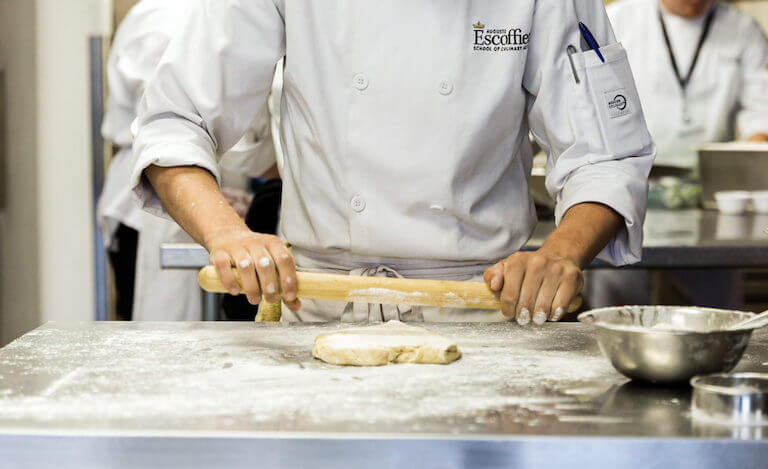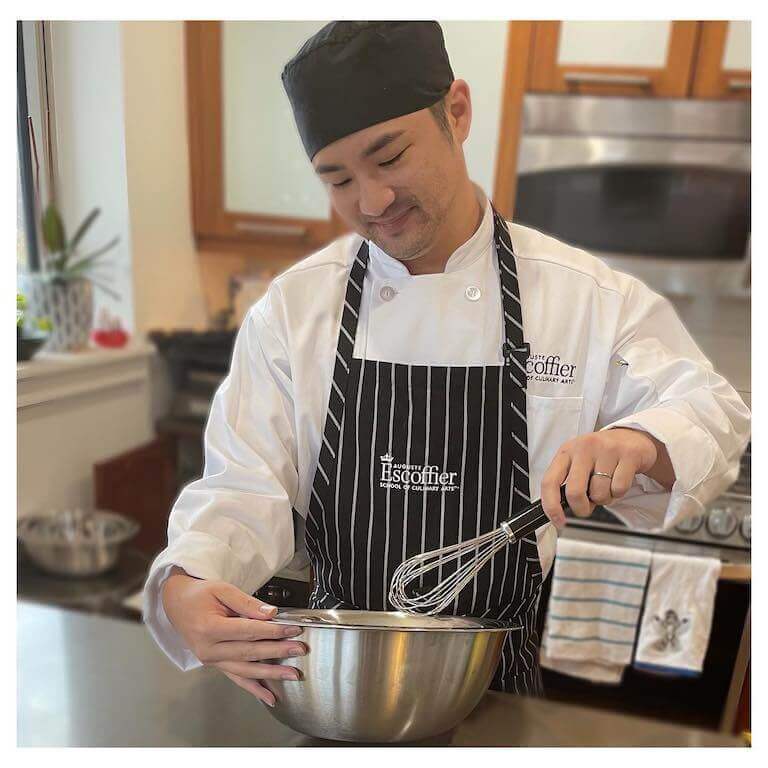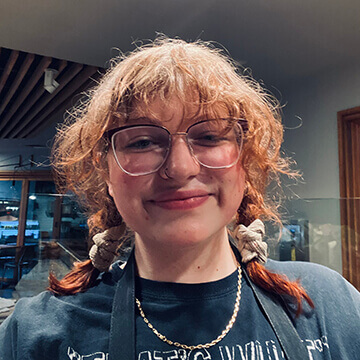Since culinary school is usually considered a trade or vocational school rather than a traditional college, you may be unsure whether you can get student loans to help cover the cost.
The good news is: student loans can be an option for many culinary students.** Loans can make culinary school possible for those who would otherwise be shut out from this valuable training. Find out what type of loan you may wish to prioritize, and how you can try to minimize the amount you have to borrow through scholarships and grants.
Pay for Culinary School with Federal Direct Student Loans
How can you pay for culinary school with student loans? Federal loans may be an option for culinary students who apply and qualify, but only if their school is accredited by an agency recognized by the U.S. Department of Education. Accreditation verifies that a school meets certain academic standards, and can help students feel confident in the quality of the education they’re investing in.
If you’re attending a qualifying school, you may be eligible for federal loans.
Start with the FAFSA®
To begin the process of securing a federal direct student loan, students must complete the Free Application for Federal Student Aid (FAFSA®).
To fill out the FAFSA®, you’ll need information like your social security number, federal income tax data, and records of financial assets for you (and your parents, if you’re a dependent student). When you file, you’ll also list the schools you plan to apply to. These schools will then receive your financial information to help them determine how much financial aid you qualify for. Don’t worry—listing a school doesn’t mean you have to apply.
Get a step-by-step guide to filling out the FAFSA® here!
“Just filling out the application and the FAFSA® were the most difficult things I had to do to get the process rolling. The Financial Aid Department was great at communicating with me. Jordan and the team at Escoffier were always emailing me back and letting me know where I was and how things were going.”*
Brent Unruh, Boulder Culinary Arts Graduate
How Much Can a Student Borrow in Federal Direct Student Loans?
The amount of aid that a student qualifies for will depend on their income and assets. Independent students may receive up to:
- $9,500 for their first undergraduate year
- $10,500 for their second undergraduate year
- $12,500 each for their third and fourth undergraduate years
These limits include both subsidized and unsubsidized loans.

Benefits of Federal Student Loans
As you may have noticed, federal student loans are probably not large enough to cover an entire year’s education. So why not skip them and instead take out a bigger private loan from a financial institution or lender?
Federal student loans offer benefits that private loans do not. To start, they usually have much lower interest rates, which can save students thousands of dollars in repayment. The current federal interest rate for undergraduate borrowers is 6.53% for the 2024-25 school year, compared to rates that can reach as high as 17% from private lenders.
When it comes time to pay back your student loans, the Department of Education requires students to begin repayment six months after graduation or after they leave the program. You should review the various payment options or contact the Department of Education if you are having trouble repaying your loans.
Bridge the Gap with Private Student Loans
Once you’ve secured your federal student loans, you can work on filling any funding gaps with private loans, if necessary. Due to their higher interest rates, private student loans should be the last funding option that you consider.
Private loans are offered by individual banks and lending institutions like SoFi, Sallie Mae, and Ascent. These private companies set their own policies and interest rates, so you’ll need to do your research to find the best deals. An interest rate of just 0.5% lower could represent thousands of dollars in savings over the life of a loan. So it’s worth it to spend the extra time doing your due diligence.
Also, look into the lender’s deferment and forbearance policies. While you hope you’ll be able to make every payment on time, unexpected challenges may come up along the way. You want a lender who has a track record of working with their students to help them get caught up.
Jason Rodriguez, Escoffier’s Director of Financial Aid, recommends that students, “…be a smart borrower. Construct a budget and only borrow what is needed to cover your school expenses such as tuition.”* Every dollar you borrow must be paid back with interest!
Do You Need Loans? Alternative Ways to Pay for Culinary School
Now you know that student loans are an option. But do you even need them? There are alternative sources of funding that may be available to eligible students—like scholarships, grants, and military funding.
And since these sources of funding don’t have to be paid back, they should be your #1 goal!
Culinary Scholarships and Grants
When you fill out your FAFSA®, you apply for some grants in addition to federal loans. For the 2024-25 award year, the Federal Pell Grant disburses up to $7,395 to students who have great financial need. Pell Grants typically don’t need to be paid back unless you leave school early or in certain other circumstances.
You can also apply for private scholarships to help fund your education. Awarded based on merit, need, or through competitions, culinary scholarships from private companies, industry organizations, and from culinary schools themselves may help offset the cost of culinary school. The Escoffier Scholarship Foundation, for example, offers scholarships to select students who demonstrate financial need.
Veteran and Military Funding
The GI Bill® and other special grants can help those who have served and their families to pay for their higher education. If you’re active-duty military, a veteran, or a relative, you may be able to apply for funding through the Veterans Administration, the Yellow Ribbon Program, or the Military Spouse Career Advancement Accounts Program. The Department of Veterans Affairs is the determining body for any veteran education benefits. For further information, you should reach out to the VA directly.
“I worked with the Financial Aid Director, who helped me get some of the scholarships I qualify for because my dad is a disabled veteran.”*
Kadie Sardo, Boulder Culinary Arts Student
Tuition Assistance
Some employers help promising cooks grow their skills through tuition assistance or reimbursement. If you’re already working in the culinary industry, ask your manager or human resources department if they have a tuition assistance program that you can take advantage of!

Loans Put Education Within Reach
In a perfect world, everyone who wanted to attend school would have plenty of funding, and no one would even need loans. But since that’s not the case, it’s wonderful that there are loan programs in place to help students from all backgrounds and all walks of life to get their education. It’s this diversity that helps to make culinary arts such a fascinating career!
For more details about the financial aid process, and to ask our financial advisors questions about your specific circumstances, contact us today.
To learn more about financing your education, try these resources next:
- How Much Does Culinary School Cost and How Can You Pay For It?
- Can You Deduct College Tuition from Taxes?
- How Long Does It Take to Pay Back Student Loan Debt…and Is It Worth It?
*Information may not reflect every student’s experience. Results and outcomes may be based on several factors, such as geographical region or previous experience.
**The funding sources listed in this article are third party offerings and not offered by Auguste Escoffier School of Culinary Arts. Open dates, deadlines, and application criteria may change. Always check the provider’s website for updated information.

 “Just filling out the application and the FAFSA® were the most difficult things I had to do to get the process rolling. The Financial Aid Department was great at communicating with me. Jordan and the team at Escoffier were always emailing me back and letting me know where I was and how things were going.”*
“Just filling out the application and the FAFSA® were the most difficult things I had to do to get the process rolling. The Financial Aid Department was great at communicating with me. Jordan and the team at Escoffier were always emailing me back and letting me know where I was and how things were going.”* “I worked with the Financial Aid Director, who helped me get some of the scholarships I qualify for because my dad is a disabled veteran.”*
“I worked with the Financial Aid Director, who helped me get some of the scholarships I qualify for because my dad is a disabled veteran.”*